For many years, I steered clear of potracks. I disliked the feeling of having things hanging above me when I cooked, the visual busy-ness they created, and the generally clunky lines of most commercial ones. In my old place, I hung my pots on wall racks made from sleek shower bars, in a nook that would attenuate their strong visual effect; eventually, that nook became so full, I hid it with a screen.
In the new Laboratory, I wanted easy access to my wonderful array of pots collected over many years of cooking and traveling. With storage space at a premium, a pot rack seemed like the best option. So I set about trying to find my way around the qualities of classic pot-racks that I didn’t like, to fashion a minimalist pot rack.

I would display my pots on two thin bars in the open space over and to-the-side-of the boxed-in fridge. But as with many details of the renovation, going minimal meant more problems to solve, at a greater cost.
The first step in lightening the look would be to make the horizontal bars thinner and sleeker than the usual 2+inch bars. I did a rough count of my pot’s weights to figure out the load the each bar would have to bear; the top one, a 6-foot span, would hold the heaviest pots. After many conversations with experts at Grainger and Zoro Tools, I bought the strongest 1-inch stainless steel bar I could find.
Bruce McKenna, who was working with me, devised an impromptu test of how much weight the bar could hold by placing each edge of the bar on a block and stepping on the center, gradually putting his own weight on it. We roughly calculated how much weight it took to bow the bar. It became clear that the bar would eventually sag under the weight of my many pots. A brace or support of some kind would be needed. I researched various metal angles used in boating and shelving. All seemed like they would visually ‘break’ the clean horizontal line I envisioned. Bruce and I decided to go ahead and install the bar to see what the reality of hanging pots from it would tell us, then figure out a solution once we saw what was what.
Originally, I was going to secure the bar with the smallest, most low-profile end caps I could find, similar to ones I’d used for my shower bar. Bruce had a better idea: why not insert the bar right into the walls, with no end caps, to make them have a cleaner horizontal line?
Either solution meant opening the wall to see where the carpenters had installed solid blocking during the renovation. Solid blocking are rectangles of 3/4″ plywood secured between the aluminum studs before the sheet-rock is closed in; it allows you to secure heavy items like wall-hung sinks, pot racks, and cabinets to the walls. In the heat of the renovation, I’d neglected to specify where exactly I planned to put the potrack (in fact, I hadn’t yet figured it out). The carpenters installed the blocking where they assumed it would go, assumptions being one of the greatest problems in renovations. It turned out that there was no blocking in the small space where I needed it!
First Bruce had to carefully install some blocking. Then he could install the rods, and sheet rock around it so it would look like it was coming right out of the walls.
…
…With the top bar installed, Bruce and I made two tests: we gradually loaded it with pots to see if it would bow in the middle from the weight. And we saw how low the top row of pots would hand in order to gauge the placement of the lower rack. Since the lower bar was going to hold only smallish pots and its span was only about 3 feet, we got by with using an inexpensive stainless steel bar bought at Home Depot.
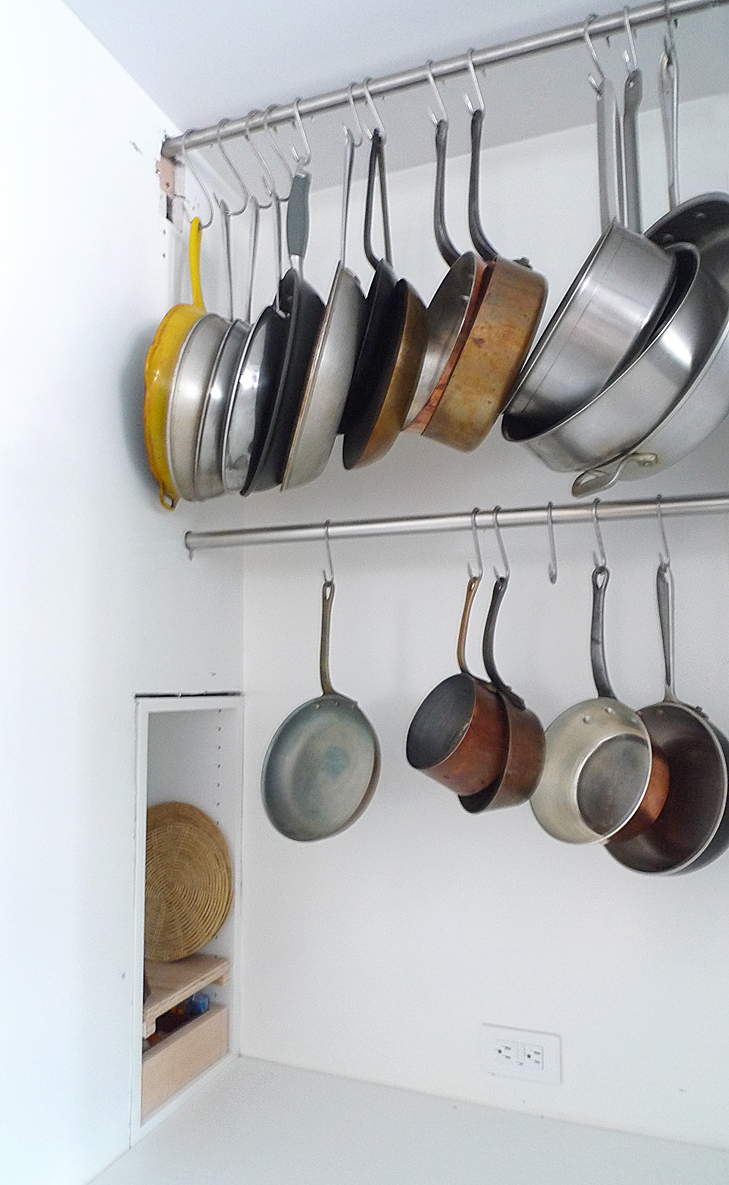
Once it was fully loaded, the upper bar did start to bow from the weight of the pots. What to do?
Bruce came back from a foray to Home Depot one day with a possible solution: a thin, strong aluminum rod that would provide vertical support from the fridge box to the top bar. It was so unobtrusive and so pale in color, it almost disappears. Perfect.
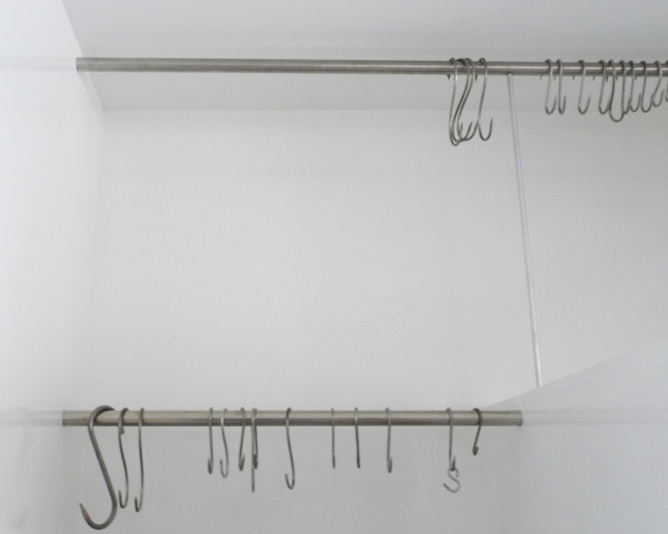
…
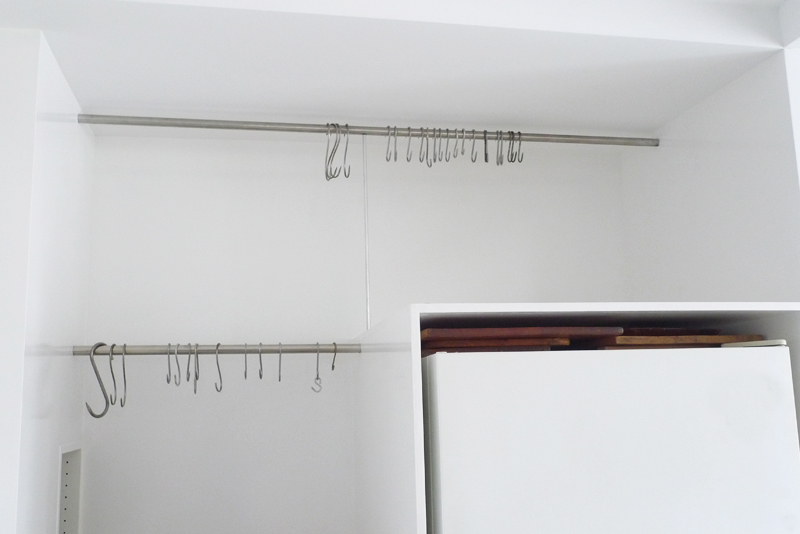
In order to have my many pots “nest” properly, I made the decision to NOT use uniform hooks. Rather, I used various sizes — some even homemade from heavy wire — so I could customize the “drop” I needed in various clusters of pots.
Although my pot rack holds A LOT, the thin bars lighten the sense of the weight they truly hold.
Related posts: space-saving bathroom towel hook solution: pot hooks
towel bars as pot racks
reno 101: why minimalist interior design is expensive
‘love letter to plywood’ from tom sachs (and from us…look what we did with it))

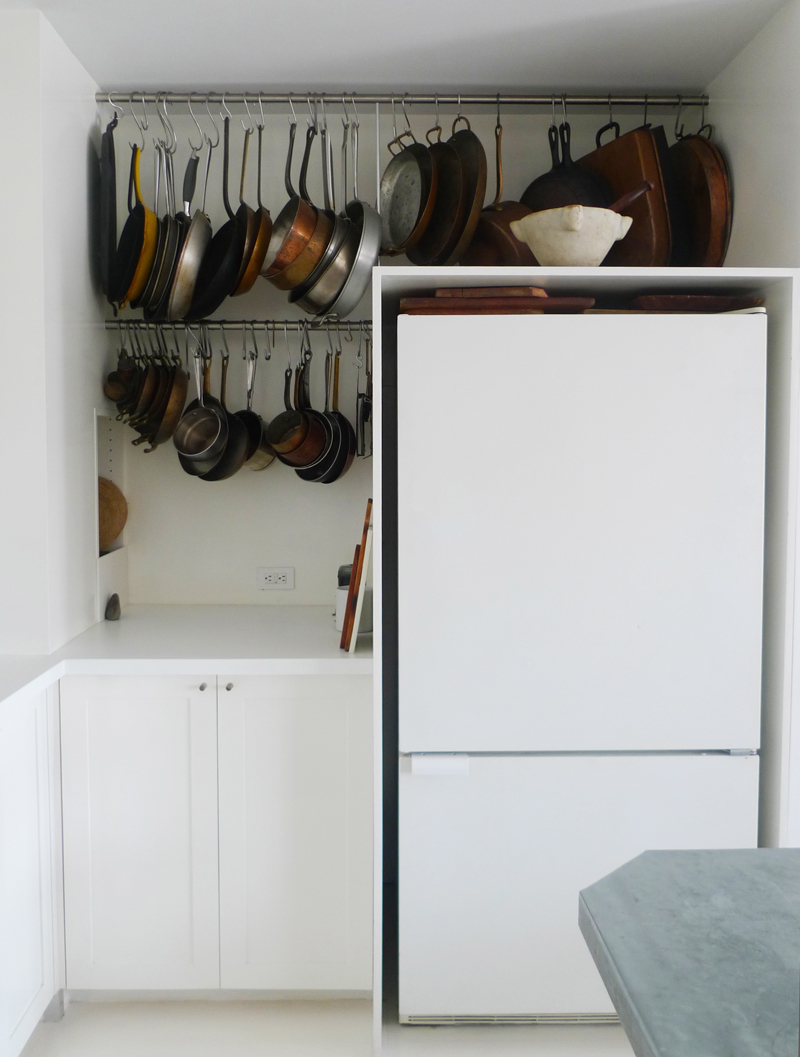

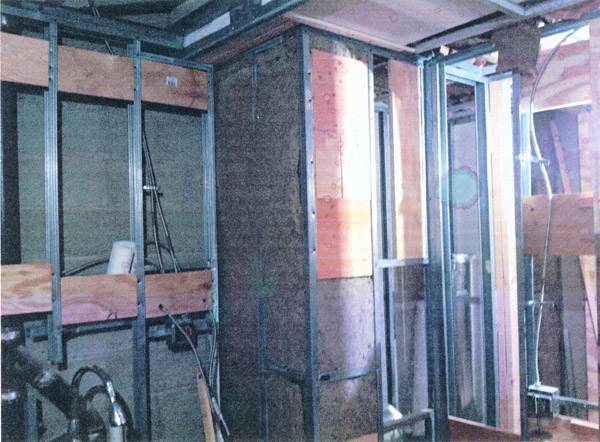
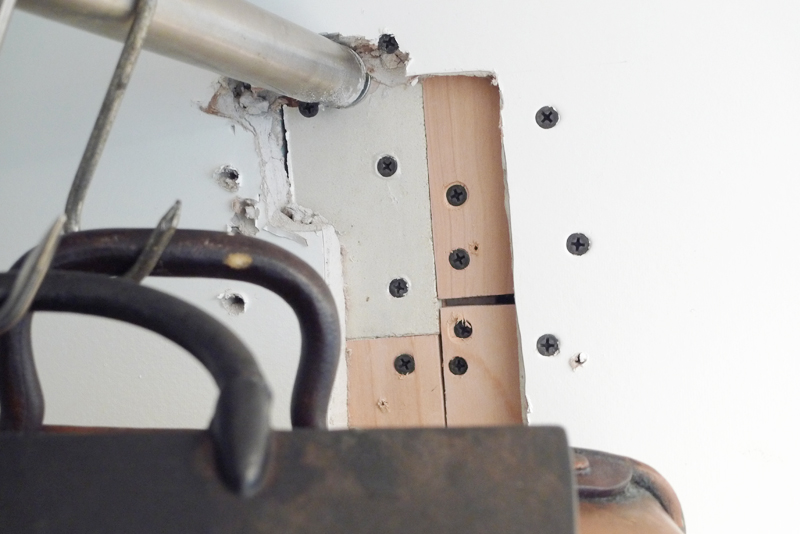
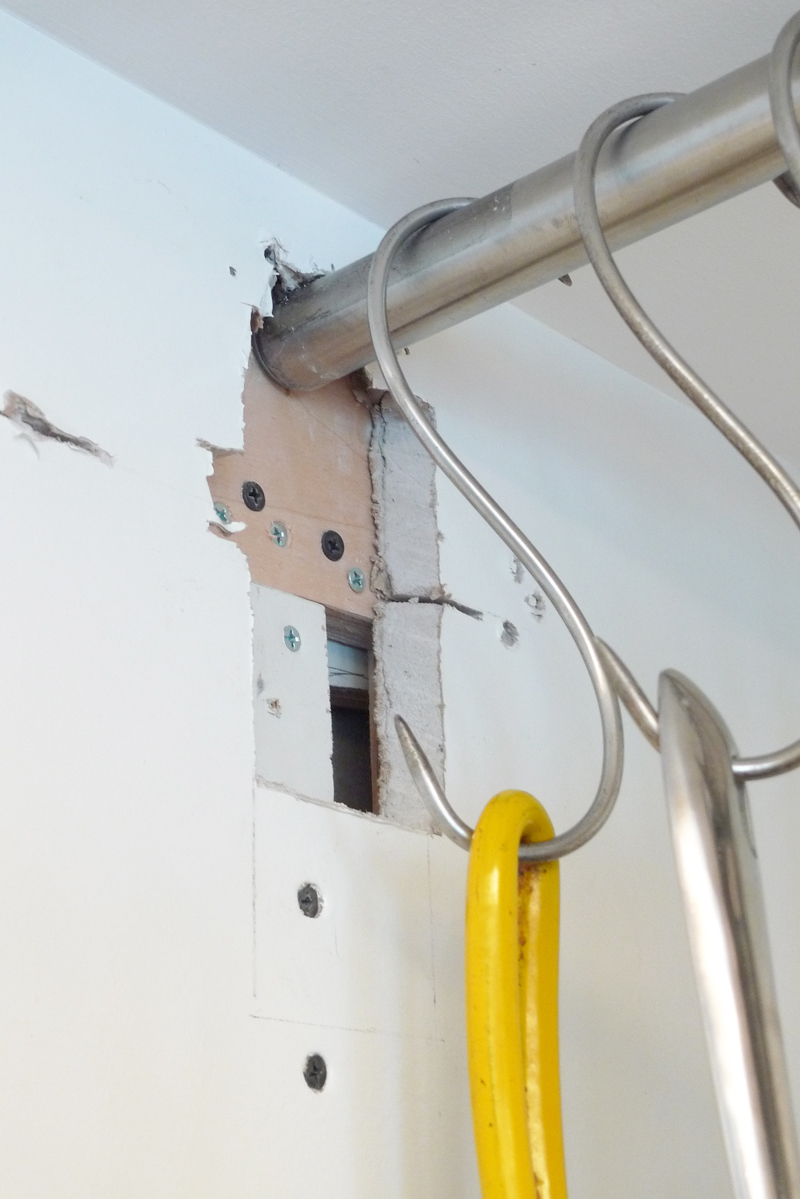
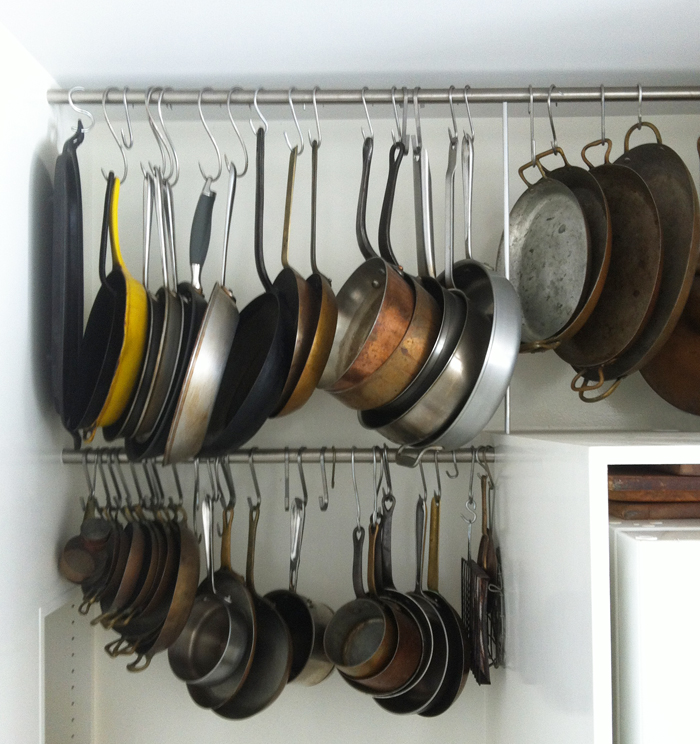


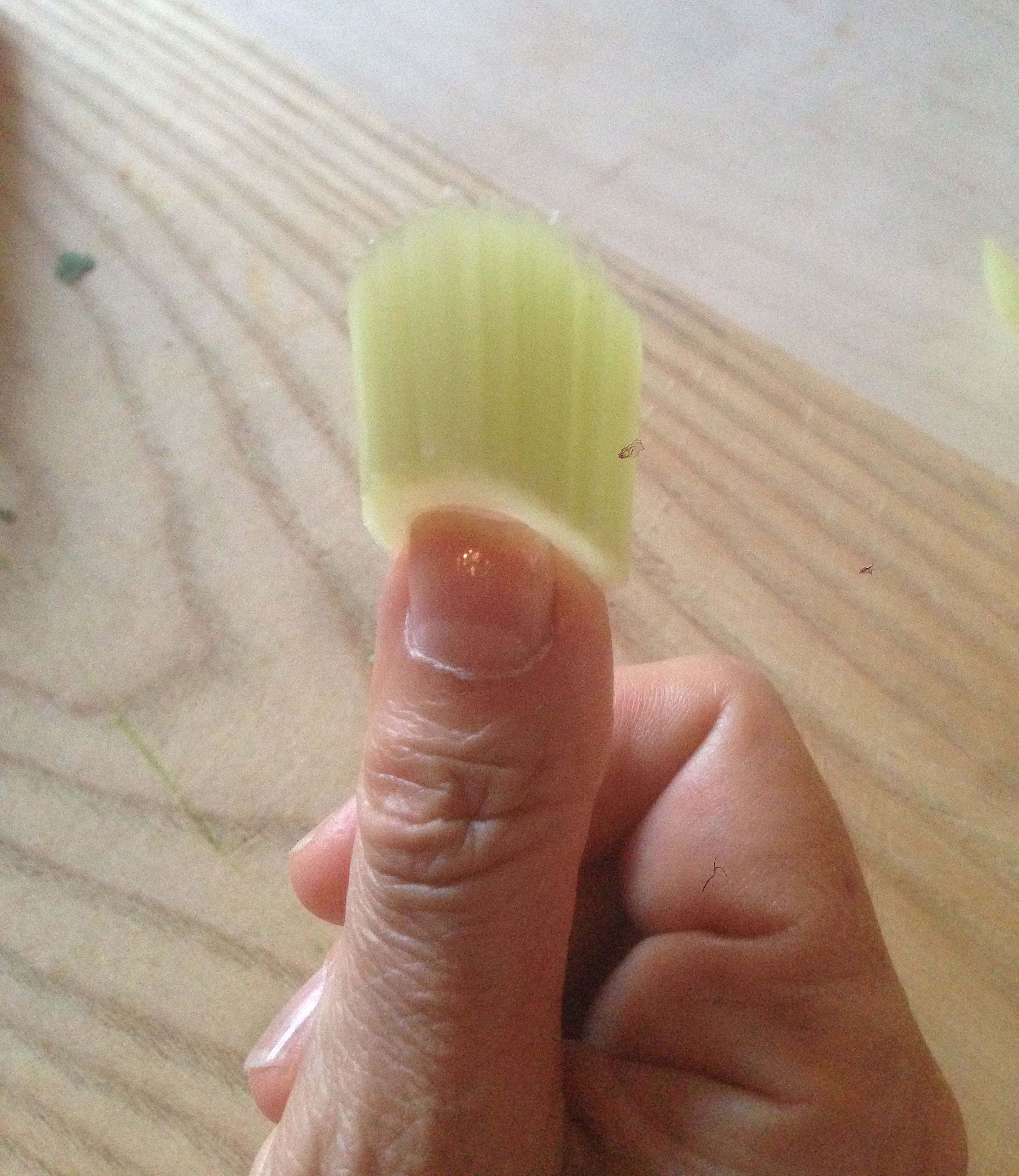
I love your site. You always have innovative and useful ideas. Improvised Life has made my life fuller over the years. Thank you Sally Schneider. Thank you.
I’m now headed off to make the sautéed cherry recipe from your book.
Gratefully,
Fern Berman